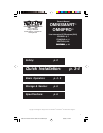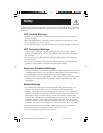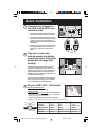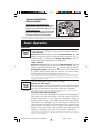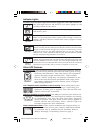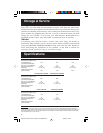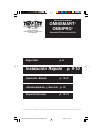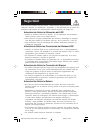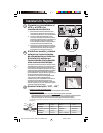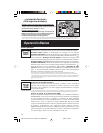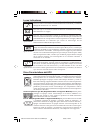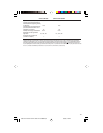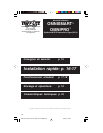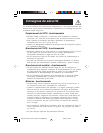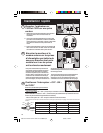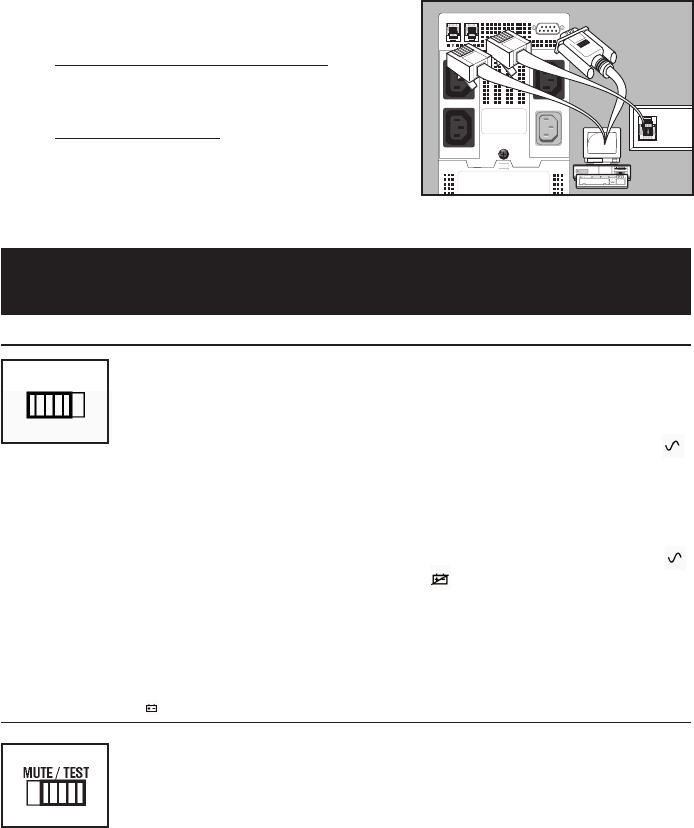
4
†Phone line and DB9 port connections are optional. Your UPS will function properly without these connections. Make sure
the equipment you connect to the UPS’s telephone jacks is also protected against damaging surges on the AC line.
–Optional Installation–
(Select models)
†
OPTION 1 (Phone-Line Surge Suppression)
Using telephone cords, connect your wall jack to the
UPS jack marked “LINE” (or “IN”). Connect your
equipment to the UPS jack marked “EQUIP” (or “OUT”).
OPTION 2 (UPS Software)
Using Tripp Lite cable (if supplied), connect the DB9
port of your computer to the DB9 port of your UPS.
Load software (if supplied) and run installation
program appropriate for your operating system.
Switches
With your UPS plugged in, set this switch according to the
recommendations in Step 3 of the Quick Installation section.
"ON" Position
Function: ENABLES battery backup. UPS Conditions: The UPS
battery is charging. Power is ON at the UPS receptacles. The " "
indicator light is illuminated. Setting Advantages: Provides
battery backup during blackouts or brownouts.
"OFF" Position
Function: DISABLES battery backup. UPS Conditions: The UPS
battery is charging. Power is ON at the UPS receptacles. The " "
indicator light is illuminated. The " " indicator light is flashing.
Setting Advantages: continues to charge the battery when power
is present while turning OFF the inverter to prevent battery
backup operation when equipment is not in use.
Note: Only UPS models equipped with a “MUTE/TEST” switch allow you to “cold start” them and use
them as stand-alone power sources when utility power is not present. To “cold start” your UPS, first
turn your UPS ON. Then, move the MUTE/TEST switch to the left, hold momentarily and release when
the " " indicator light begins to flash.
Use this momentary switch to do two things:
Silence the UPS alarm*
Move this switch to the left and release it. Note: When the battery
is nearly depleted the alarm resumes (and cannot be silenced) to
alert you to immediately shut down connected equipment.
*The UPS alarm consists of a series of short beeps followed by a brief pause. The alarm is activated
when the UPS switches to battery during a blackout or brownout.
Test your UPS's battery charge**
Leave your connected equipment ON. With your UPS plugged in
and turned ON, move this switch to the left; hold it there for 2
seconds and release it. The UPS will momentarily switch to
battery to test its charge. If the UPS alarm sounds or the properly-
sized load is not supported, let your UPS charge its batteries for
12 hours and repeat the test. If alarm still sounds, contact Tripp
Lite for service. CAUTION: Do not unplug your UPS to test its
batteries. This will remove safe electrical grounding and may
introduce a damaging surge into your network connections.
**If your model is not equipped with this switch, you can still test your UPS batteries. First plug your
UPS into a grounded surge suppressor (which will maintain the ground connection), then turn the surge
suppressor's power switch OFF.
Basic Operation
OFF ON
Available on
select models
9906151 OmniSmart OmniPro 230V Owner's Manual.p65 9/30/99, 1:47 PM4



